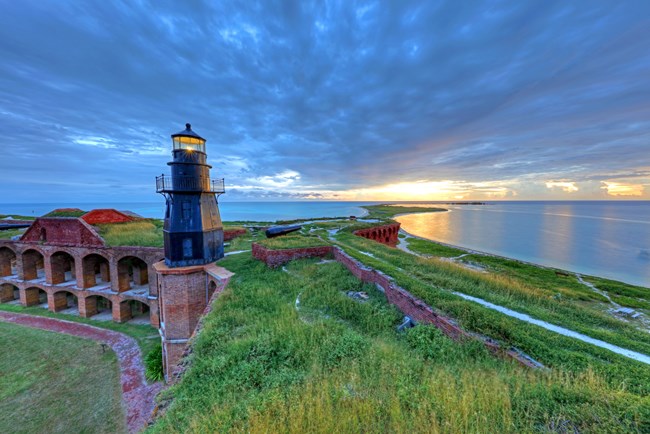.jpg?maxwidth=1300&maxheight=1300&autorotate=false&format=webp)
NPS History of Dry Tortugas Becoming a National ParkFort Jefferson National Monument was designated by President Franklin D. Roosevelt under the Antiquities Act on January 4, 1935. (Comprising 47,125 acres (19,071 ha) The monument was expanded in 1983 and re-designated as Dry Tortugas National Park on October 26, 1992 by an act of Congress.
Rich Cultural HeritageThe rich cultural heritage of the Dry Tortugas all begins with its location 70 miles west of Key West, Florida. The seven keys (Garden, Loggerhead, Bush, Long, East, Hospital, and Middle) collectively known as the Dry Tortugas, are situated on the edge of the main shipping channel between the Gulf of America, the western Caribbean, and the Atlantic Ocean. |

NPS Photo Denise Diaz Fort Jefferson on Garden KeyFort Jefferson, the largest all-masonry fort in the United States, was built between 1846 and 1875 to protect the nation's gateway to the Gulf of America. Supply and subsidence problems and the Civil War delayed construction. The fort was never completed because of fears that additional bricks and cannon would cause further settling and place more stress on the structure and the cistern system. Distinguishing features include decorative brickwork and 2,000 arches. Time, weather, and water continue to take their toll, necessitating ongoing stabilization and restoration projects. 
NPS Photo Glenn Gardner Fort Jefferson and a Harbor LightA large military fortress, Fort Jefferson, was constructed in the mid-19th century as an effort for the United States to protect the extremely lucrative shipping channel. Low and flat, these islands and reefs pose a serious navigation hazard to ships passing through the 75-mile-wide straits between the gulf and the ocean. Consequently, these high risk reefs have created a natural “ship trap” and have been the site of hundreds of shipwrecks. |
Last updated: February 24, 2025
